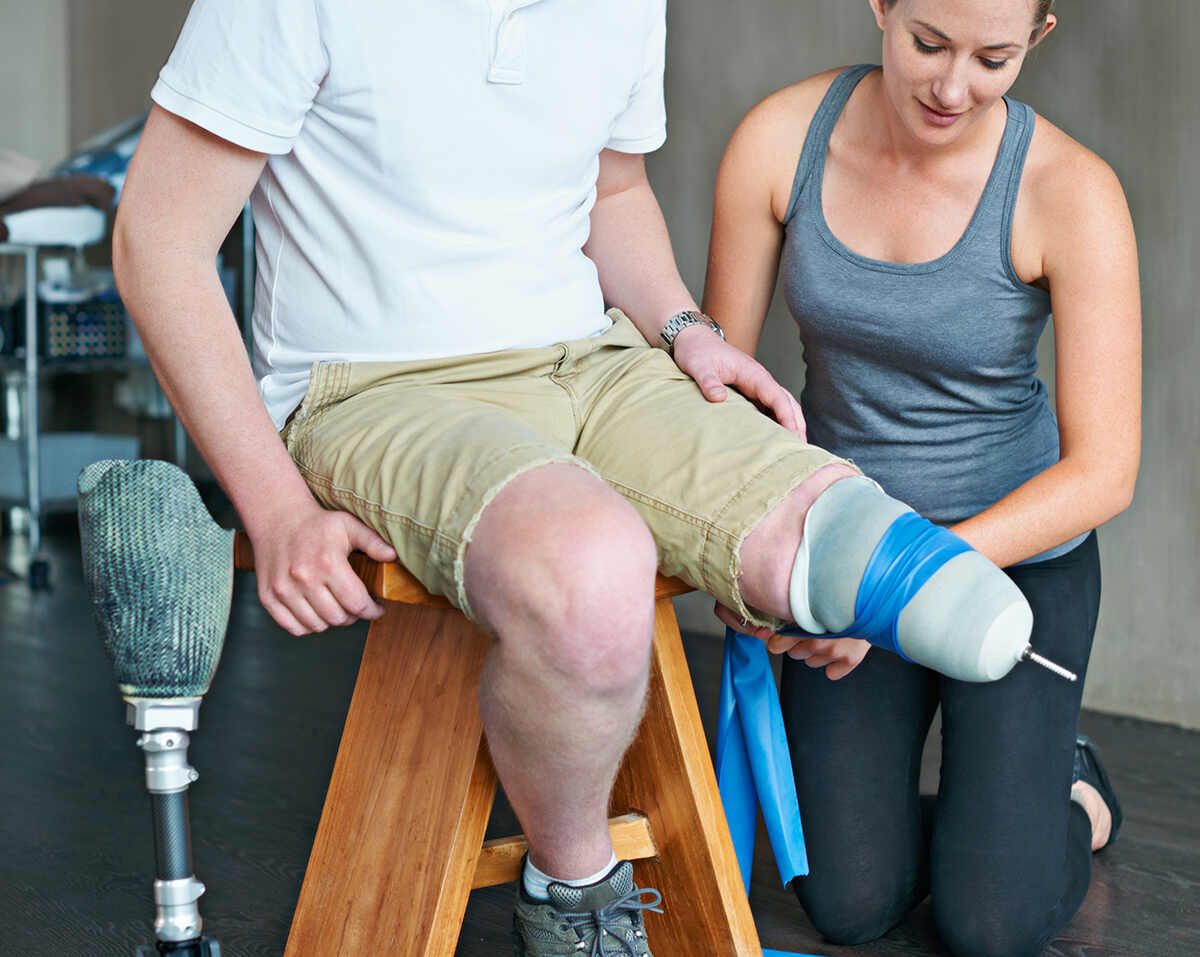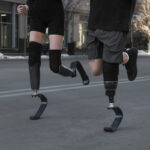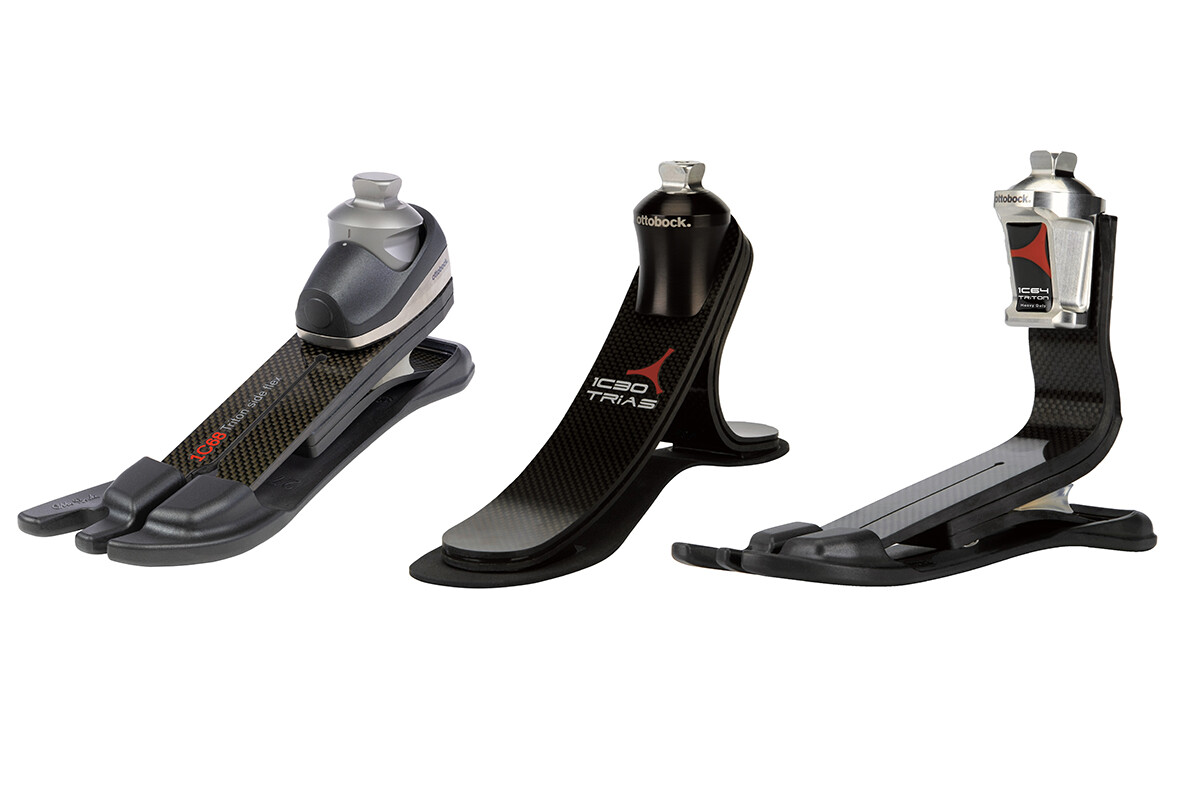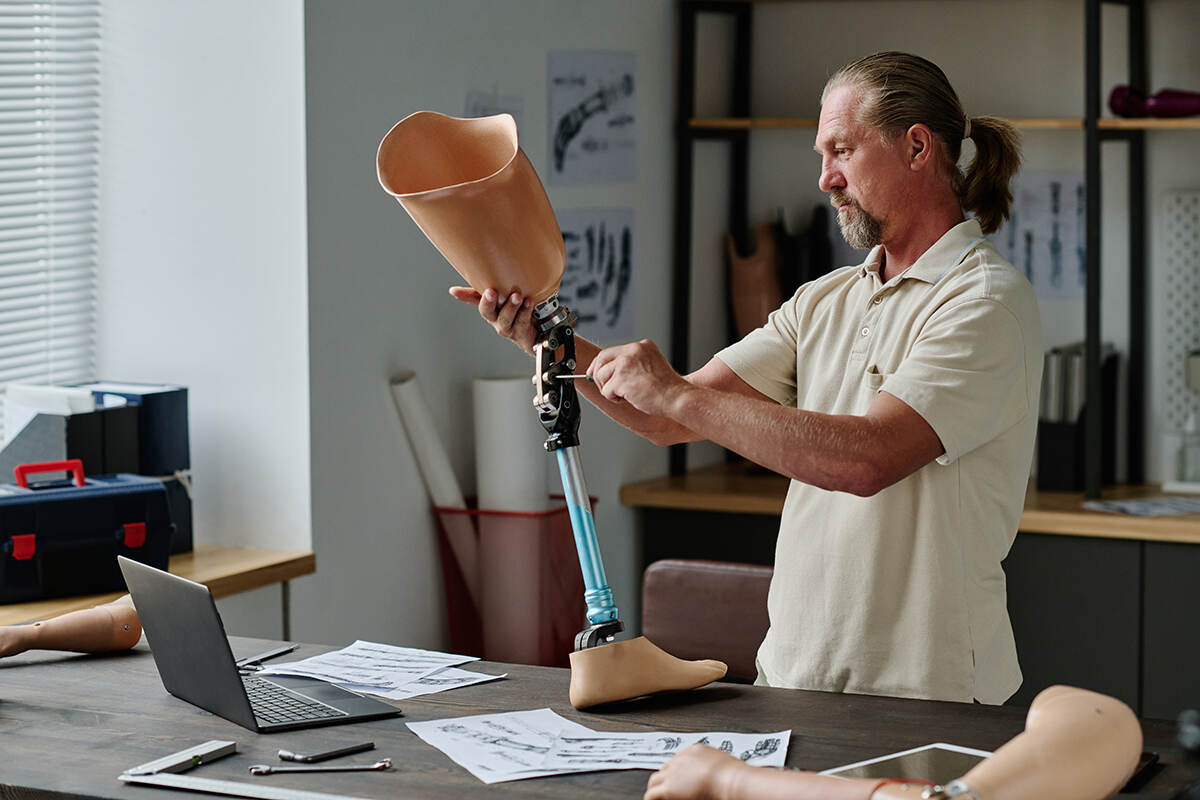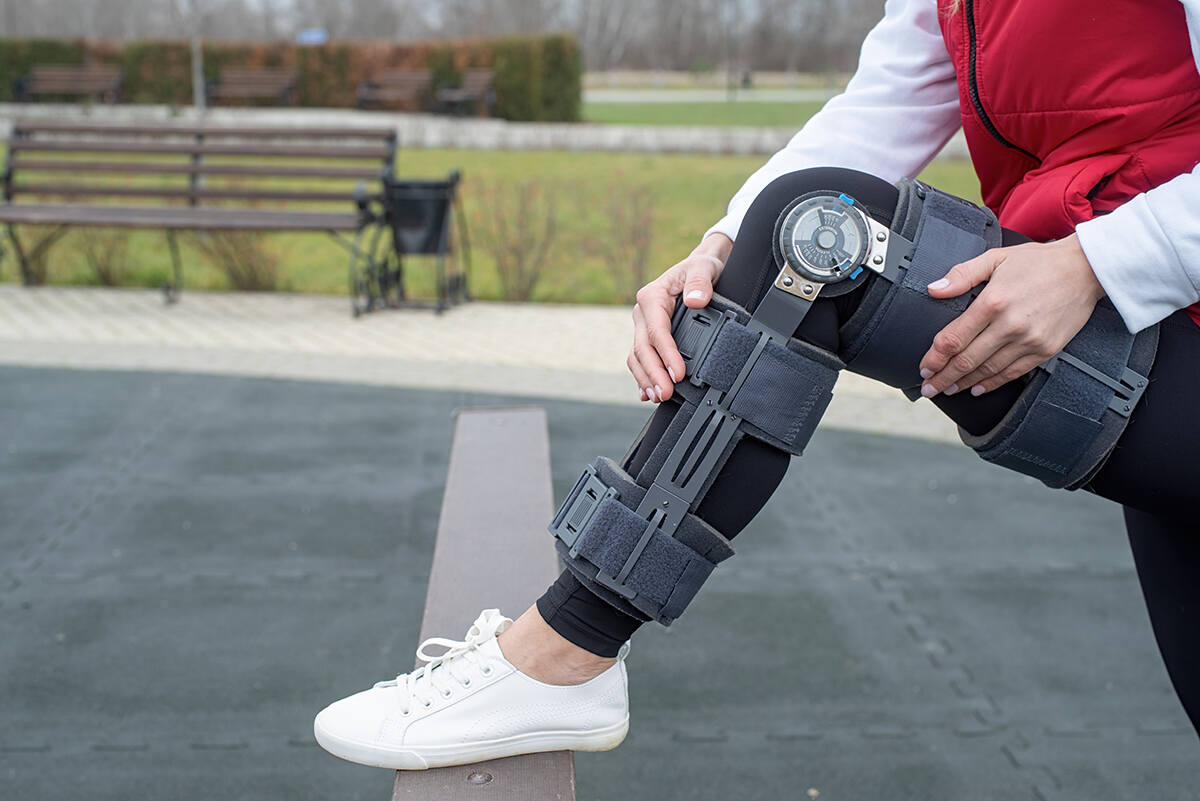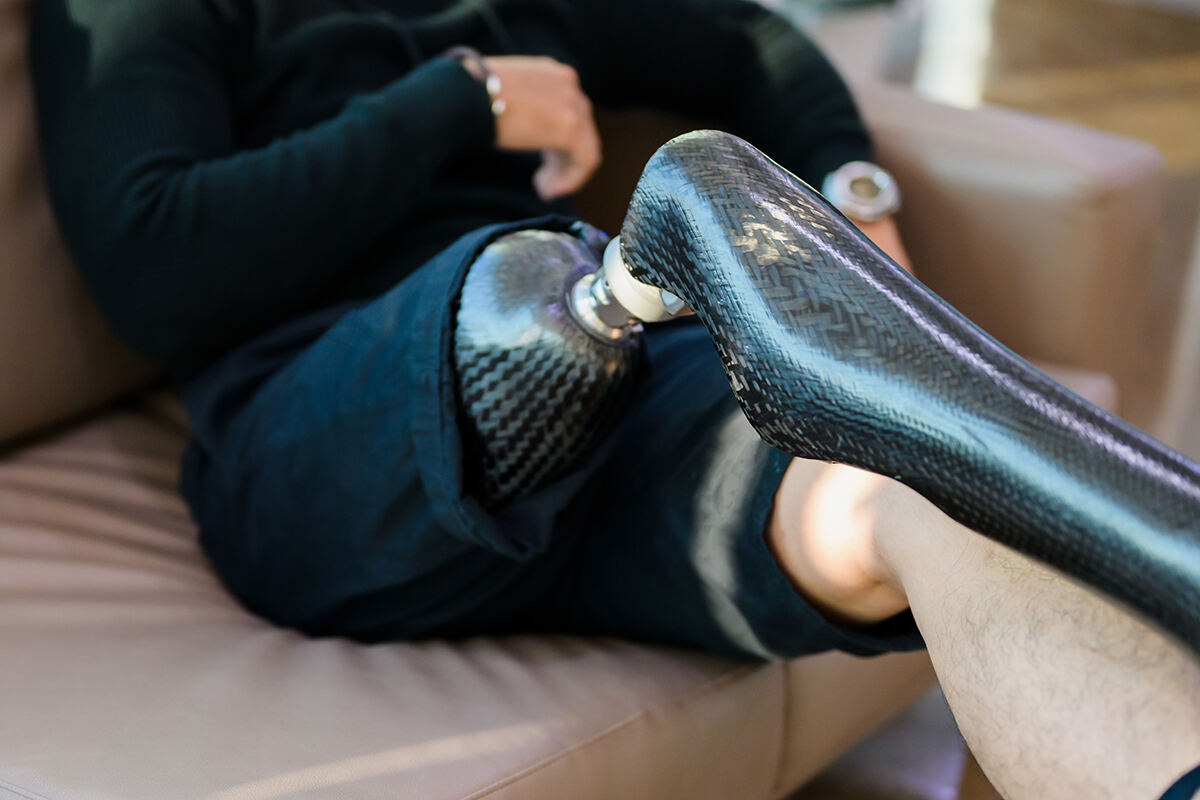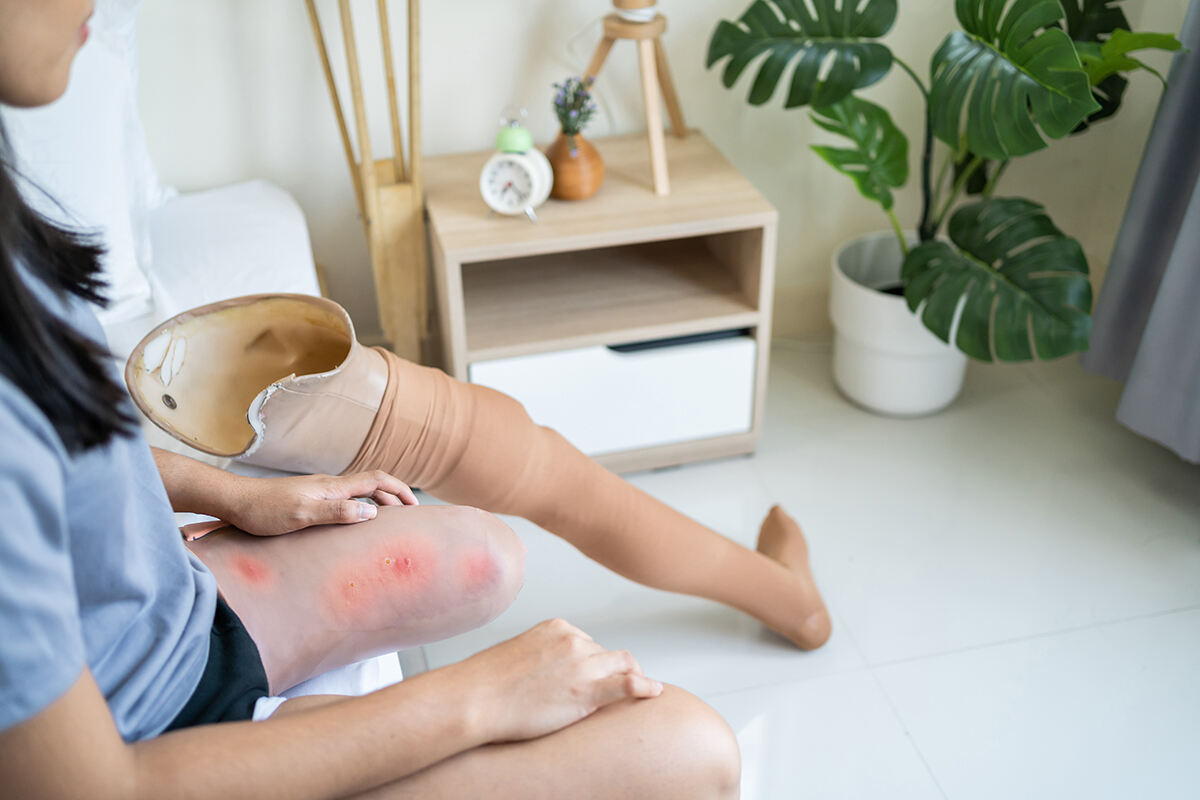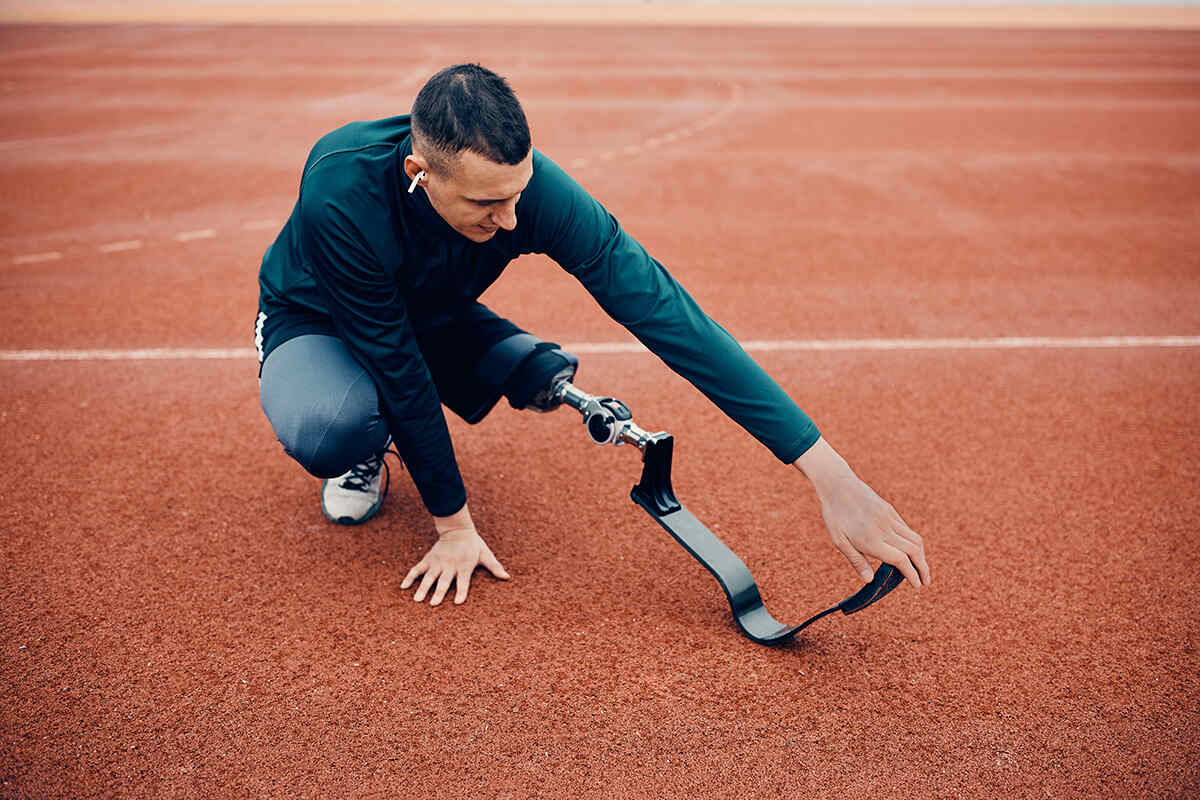Maintaining your artificial limb not only ensures its longevity but also significantly impacts your overall well-being and comfort. Proper care and attention to your prosthesis can make all the difference in your daily life. In this blog post, we’ll guide you through essential tips and recommendations for maintaining your prosthetic device, residual limb care, and partnering with healthcare providers for optimal prosthesis care.
Key Takeaways
- Maintain prosthetic devices with proper cleaning and drying techniques, as well as daily skin care routine.
- Manage excessive sweating with good hygiene and sweat-reducing measures.
- Regularly inspect mechanical components of the device to ensure optimal performance, comfort and fit.
Proper Cleaning of Prosthetic Devices
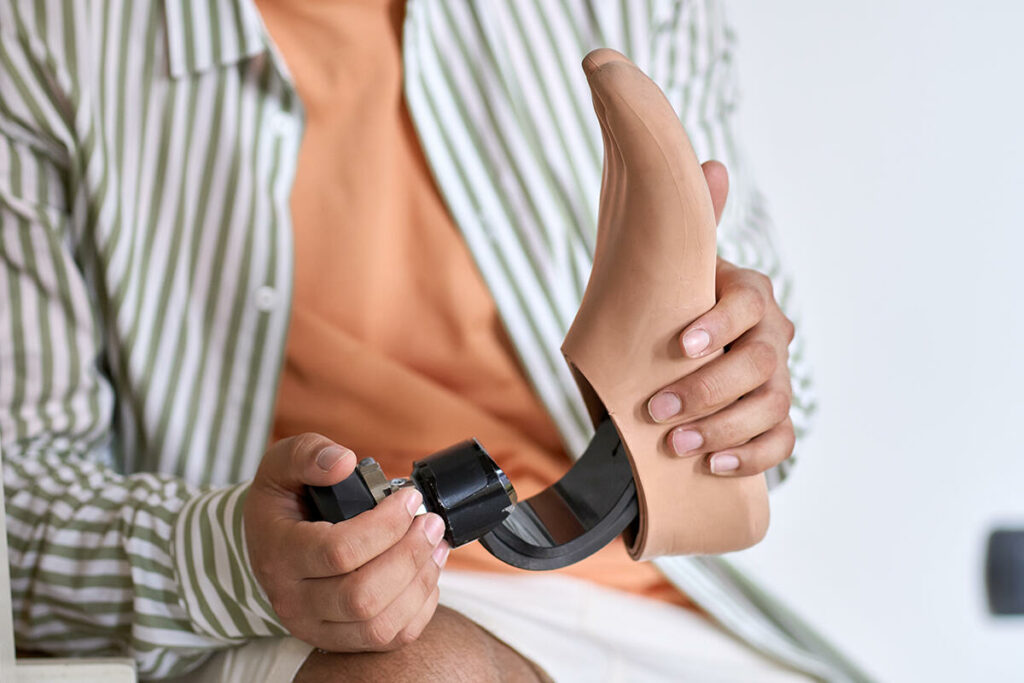
Maintaining your prosthetic device is vital for preserving its long life and functionality. Daily cleaning helps to avoid dirt and oils from impacting the fit and functioning of the device, preventing general skin irritation.
Also, correct drying methods are necessary to prevent skin irritation, like dry skin, and maintain the prosthetic device’s integrity.
Mild Soap and Warm Water
Gentle cleaning with mild soap and warm water is the recommended approach to avoid potential damage and keep the skin moisturized. A soap-free, fragrance-free, water-soluble, and non-alkaline soap is considered suitable for prosthetic device cleaning, including those with an ankle joint. Lukewarm water is the ideal temperature for cleaning prosthetic devices, including body-powered devices.
For the best result, follow these steps to clean your prosthetic device:
- Blend lukewarm water with mild soap.
- Use a cloth or sponge to gently clean the device, paying attention to hard-to-reach spots. Use a scrub brush if necessary.
- Rinse off any soap residue with clean water.
- Dry the prosthetic device thoroughly before using it again.
Drying Techniques
Appropriate drying methods are vital in preserving your prosthetic device and avoiding skin irritation. To ensure your device is completely dry before wearing it, follow these steps:
- Avoid exposing it to water as it can cause damage to sensitive components.
- Use a drying stand or allow the device to air dry naturally.
- Avoid using heat to dry the device.
Thermoplastic elastomer is an appropriate material for drying prosthetic devices. Remember, heat or blow drying should not be used on prosthetic devices, as the plastics can be distorted or softened by heat, resulting in discoloration. Store your prosthetic device in a cool and dry environment to prevent potential damage.
Residual Limb Care and Skin Health
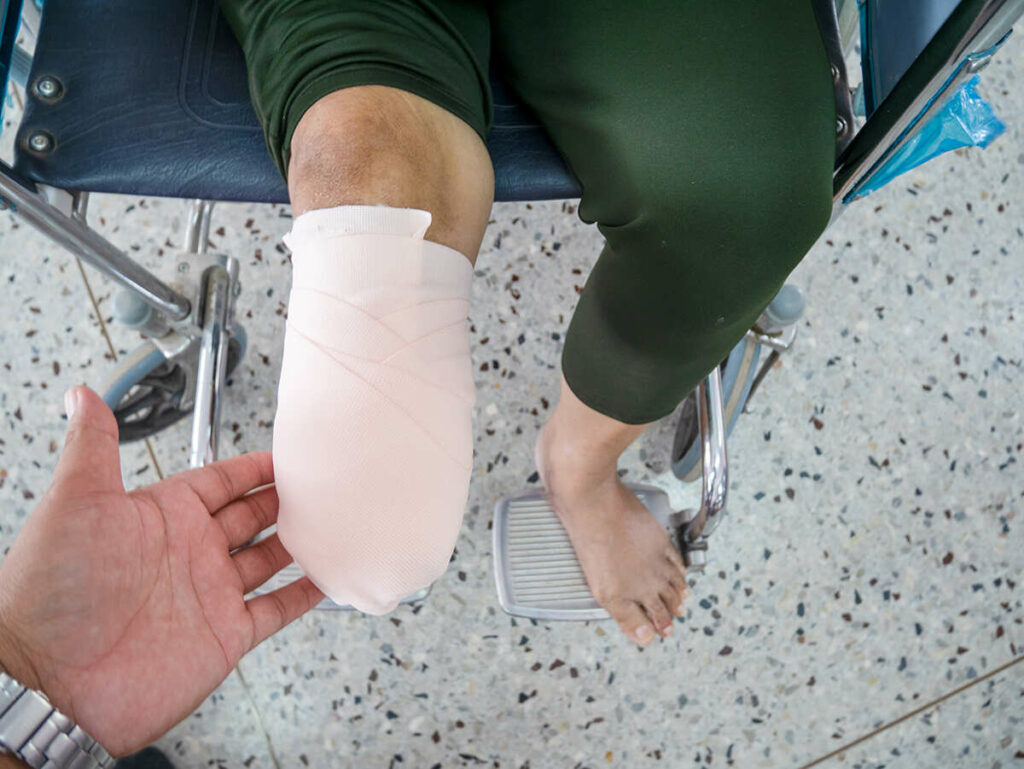
Skin health and residual limb care are primary aspects of prosthetic care for amputees. Maintaining your skin’s protective function and avoiding the risk of painful ulcers and serious infections requires regular attention and care.
Monitoring your residual limb is necessary for getting the best performance from your prosthetic device. If you notice any signs of skin irritation or discomfort, as well as issues with the device components, it’s important to alert your healthcare team right away.
Daily Skin Care Routine
Establishing a daily skin care routine is vital to avoid possible complications and ensure comfort while wearing a prosthesis. Amputees using prosthetic devices should use the following skin care products:
- Daytime moisturizers containing antibacterial and antifungal ingredients
- Antimicrobial liquid soap
- Prosthetic skin lotion
- Prosthetic ointment
- Fragrance-free hand cream
Dry skin can be more susceptible to damage, providing an entry point for bacteria. Using these skin care products will help maintain healthy skin and prevent infections, especially as dry skin can be more vulnerable to skin breakdown.
To maintain your residual limb moisturized effectively, regularly apply a moisturizer, avoid alcohol-based products, and use a nourishing prosthetic cream or lotion for massage. It is also advised to shower or bathe in the evening rather than the morning, as hot water can cause swelling in the limb, making it challenging for the prosthetic device to fit correctly.
Managing Excessive Sweating
Excessive sweating can cause discomfort and slippage of the prosthetic liner, making it important to manage it effectively. The humid environment generated within the prosthesis socket contributes to increased perspiration. To reduce excessive sweating, you can:
- Wear breathable fabrics like cotton
- Apply prosthetic antiperspirant at night
- Consume sweat-reducing foods
- Abstain from caffeine and smoking
- Maintain good hygiene
Additionally, sweat-control textiles specifically designed for amputees may also be beneficial.
Excessive sweating can affect the fit and usability of a prosthetic device, resulting in a loosened liner, improper fit, and possible skin irritation. Sweat can become trapped inside the prosthetic device, causing it to slip off the skin, and the limb to slide in the socket, causing discomfort and chafing.
Mechanical Device Maintenance
Keeping the mechanical components of your prosthetic device clean is necessary for its best functionality and comfort. Regular inspection of your prosthetic device for signs of wear, damage, or malfunction can help prevent potential issues and ensure it continues to perform at its best.
Regular Inspections
Regular inspections of your prosthetic device can help identify signs of wear and tear, such as:
- Fraying or tears in straps, padding, or any soft components
- Continuous redness, ulceration, tears, or scrapes on the skin
- Any signs of skin irritation or discomfort
It is important to schedule inspections with a prosthetist at least every 6 months and have it examined and serviced annually.
During routine inspections, check for:
- Visible wear and tear
- Loose components or damage
- Persistent redness or skin issues
- Any new pain or discomfort experienced while wearing the prosthesis
Addressing these issues in a timely manner is crucial to maintaining the fit and function of your prosthetic limb.
Lubrication and Adjustments
Correct lubrication and adjustments are necessary for the optimal functionality and comfort of your prosthetic device. Cleaning the interior of the socket with soap and water daily is recommended to ensure proper lubrication. Avoid vigorous scrubbing to prevent damage to the liners and use prosthetic wipes for maintenance.
Water-based lubricants with higher viscosity than natural tears or silicone-based lubricants are ideal for prosthetic devices, as they help reduce friction and ensure smooth operation. Minimizing friction between articulating joints results in a smoother and more natural movement, reducing wear and tear on the device and extending its lifespan.
Special Considerations for Different Types of Prostheses
Various prosthetic devices, including transradial prosthetic arm, transhumeral, transfemoral, transtibial, prosthetic leg, and prosthetic feet and knees, may need specific care considerations.
Understanding the specific care requirements for your prosthetic device can help ensure its durability, performance, and comfort.
Waterproof Prosthetic Devices
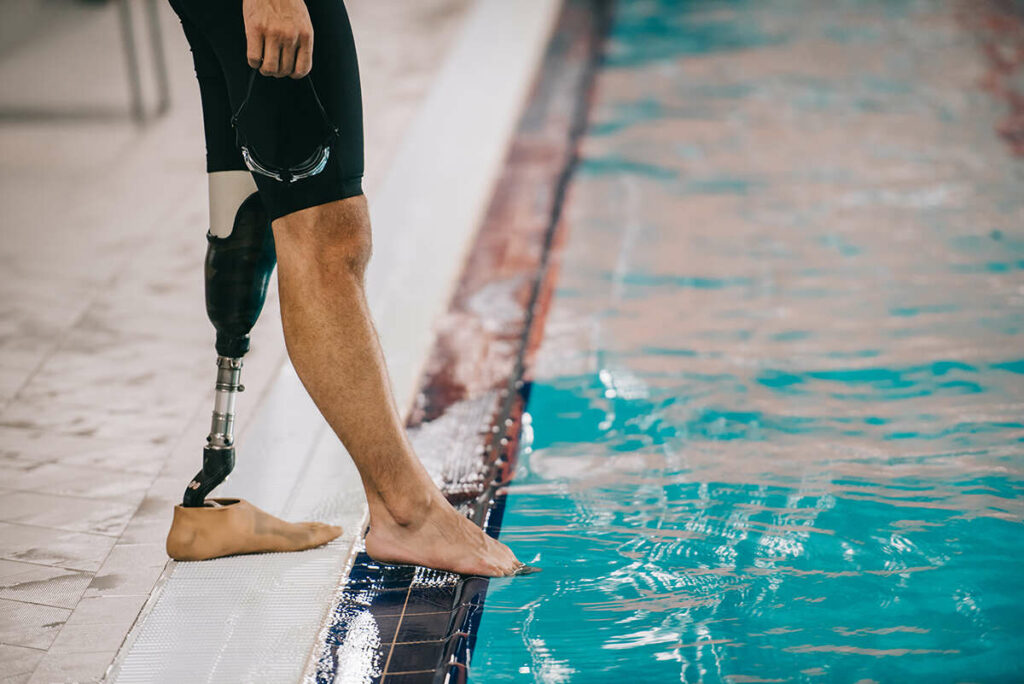
Waterproof prosthetic devices require specific care and maintenance for their durability and performance. For optimal care, clean waterproof prosthetic devices daily with mild soap, detergent, or specialized prosthetic cleaning solutions. Use a soft, damp cloth or sponge to wipe down the device and avoid immersing it in water.
Ensure complete drying before wearing the device to prevent damage.
Delicate Passive Devices
More delicate passive devices, such as cosmetic prostheses, require gentle handling and cleaning to avoid damage. Regularly sanitize these devices with rubbing alcohol and store them in their designated boxes.
Ensure you clean these devices regularly to avoid the accumulation of dirt, sweat, and bacteria that can affect the prosthesis.
Partnering with Health Care Providers
Collaborating with healthcare providers is necessary to guarantee the optimal fit and function of your prosthetic device, and to get professional advice on any issues or concerns related to prosthetic care and maintenance.
Building a relationship with your prosthetist and healthcare provider can make all the difference in your prosthetic care journey.
Regular Checkups and Adjustments
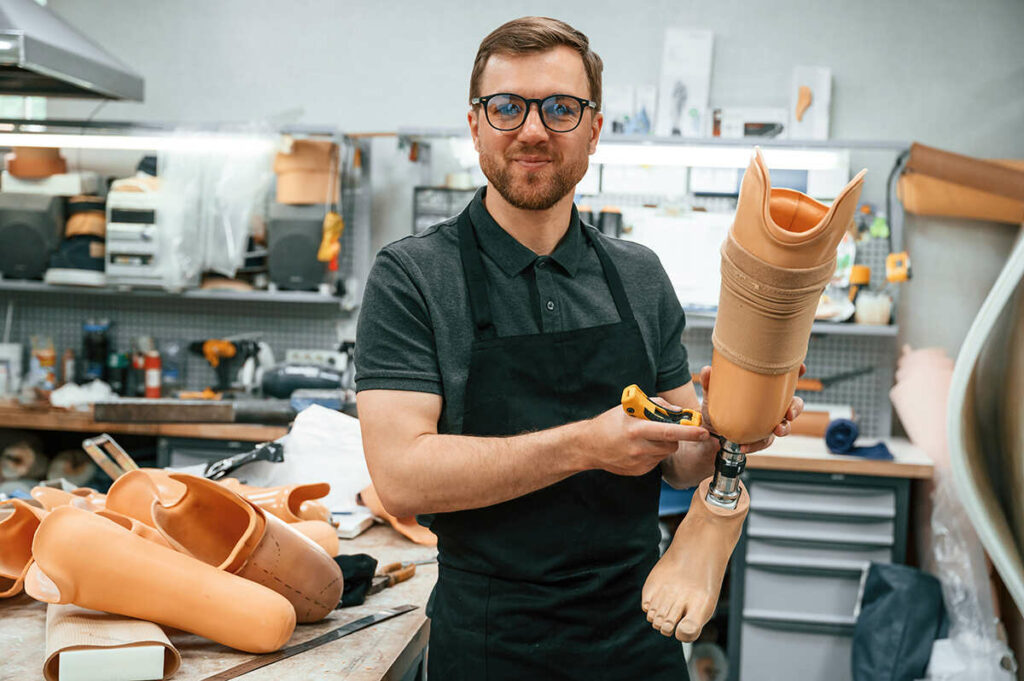
Regular checkups and adjustments with your prosthetist are necessary for maintaining the fit and function of your prosthetic device. It is advised to have regular checkups and adjustments with a prosthetist on an annual basis.
These appointments often include alignment and padding adjustments to maximize the fit, comfort, and usability of your device, as well as checking for any issues with compressed air.
Seeking Professional Help
Seeking professional help for any issues or concerns related to prosthetic care and maintenance is vital for your overall well-being. If you notice any of the following signs, it’s important to contact a prosthetist for maintenance or repair:
- Persistent redness, ulceration, tears, or scrapes on the prosthetic limb
- Malfunctioning or non-working parts of the prosthesis
- Skin irritation or swelling in the residual limb
- Any unusual signs such as visible, audible, or functional changes
Don’t hesitate to consult your doctor or prosthetist if you have any doubts or queries regarding prosthetic care.
Summary
In conclusion, taking the time to properly care for your prosthetic device, residual limb, and skin health is essential for your overall well-being and comfort. By following the guidelines and recommendations provided in this blog post, you can ensure the longevity, functionality, and optimal performance of your artificial limb. Embrace the journey and take control of your prosthetic care for a more comfortable and fulfilling life.
Frequently Asked Questions
Do prosthetics need maintenance?
Prosthetics do need maintenance in order to remain functional, comfortable and safe. This includes regular cleaning and routine care.
How do you take care of a prosthetic arm?
For hygiene purposes, keep your prosthetic arm clean with mild soap and a damp cloth. Wear clean liners and socks every day to minimize bacterial growth. Be sure to leave myoelectric prosthetics to dry overnight.
Can you wear a prosthesis in the shower?
It is important to consult your O&P professional first to find out if your prosthesis can handle a daily shower. Most prostheses are not waterproof, but some can be slightly wet in an unexpected rain shower.
What is the difference between a prosthetic and a prosthesis?
A prosthesis is a man-made substitute for a missing body part, while a prosthetic is an individual part of the prosthesis. Prostheses can be used to replace parts lost due to cancer or other treatments such as hair loss.
How often should I clean my prosthetic device?
Clean your prosthetic device daily with mild soap and warm water for optimal longevity and functionality.


